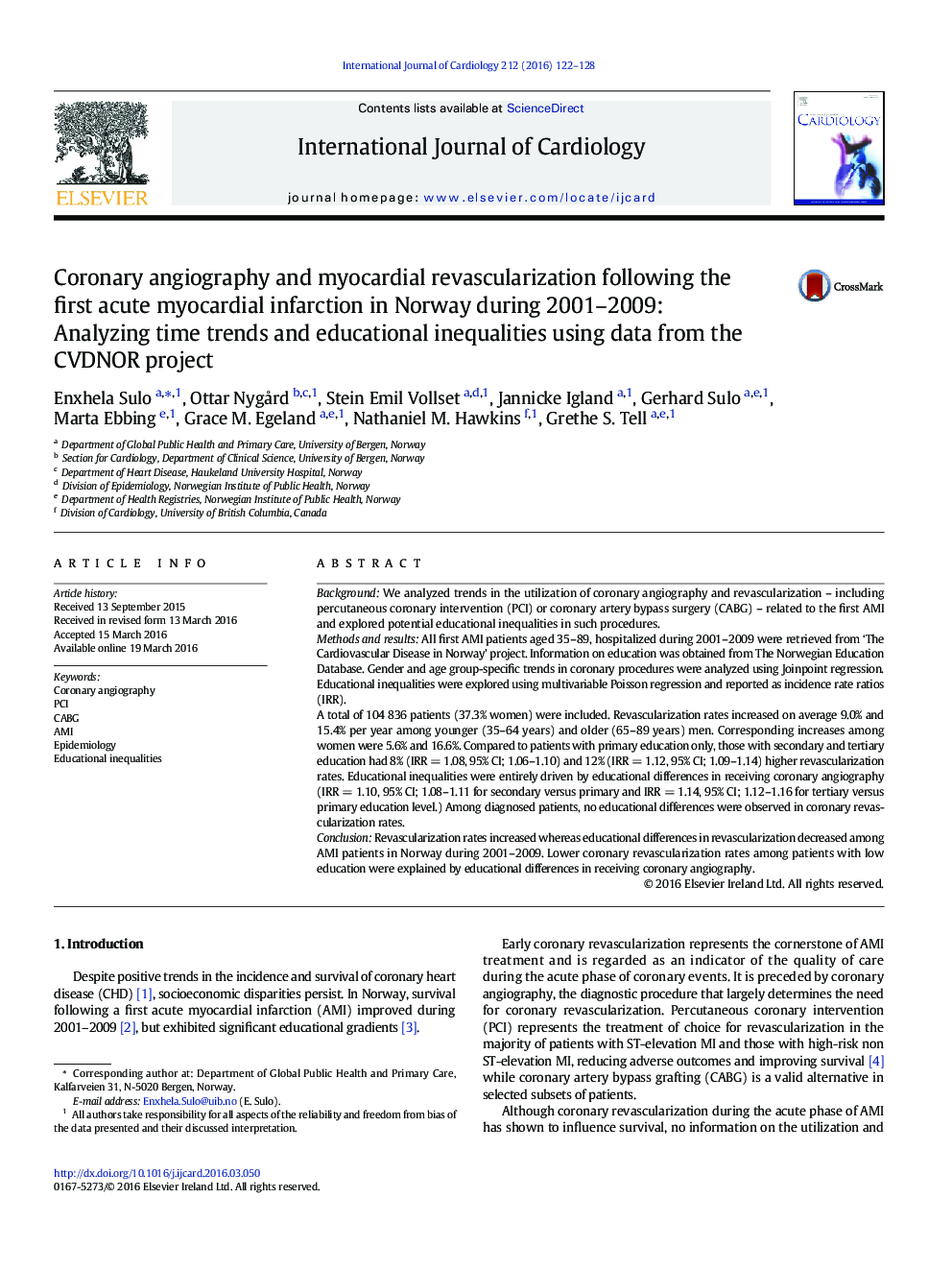| کد مقاله | کد نشریه | سال انتشار | مقاله انگلیسی | نسخه تمام متن |
|---|---|---|---|---|
| 5964367 | 1576137 | 2016 | 7 صفحه PDF | دانلود رایگان |

BackgroundWe analyzed trends in the utilization of coronary angiography and revascularization - including percutaneous coronary intervention (PCI) or coronary artery bypass surgery (CABG) - related to the first AMI and explored potential educational inequalities in such procedures.Methods and resultsAll first AMI patients aged 35-89, hospitalized during 2001-2009 were retrieved from 'The Cardiovascular Disease in Norway' project. Information on education was obtained from The Norwegian Education Database. Gender and age group-specific trends in coronary procedures were analyzed using Joinpoint regression. Educational inequalities were explored using multivariable Poisson regression and reported as incidence rate ratios (IRR).A total of 104 836 patients (37.3% women) were included. Revascularization rates increased on average 9.0% and 15.4% per year among younger (35-64Â years) and older (65-89Â years) men. Corresponding increases among women were 5.6% and 16.6%. Compared to patients with primary education only, those with secondary and tertiary education had 8% (IRRÂ =Â 1.08, 95% CI; 1.06-1.10) and 12% (IRRÂ =Â 1.12, 95% CI; 1.09-1.14) higher revascularization rates. Educational inequalities were entirely driven by educational differences in receiving coronary angiography (IRRÂ =Â 1.10, 95% CI; 1.08-1.11 for secondary versus primary and IRRÂ =Â 1.14, 95% CI; 1.12-1.16 for tertiary versus primary education level.) Among diagnosed patients, no educational differences were observed in coronary revascularization rates.ConclusionRevascularization rates increased whereas educational differences in revascularization decreased among AMI patients in Norway during 2001-2009. Lower coronary revascularization rates among patients with low education were explained by educational differences in receiving coronary angiography.
Journal: International Journal of Cardiology - Volume 212, 1 June 2016, Pages 122-128